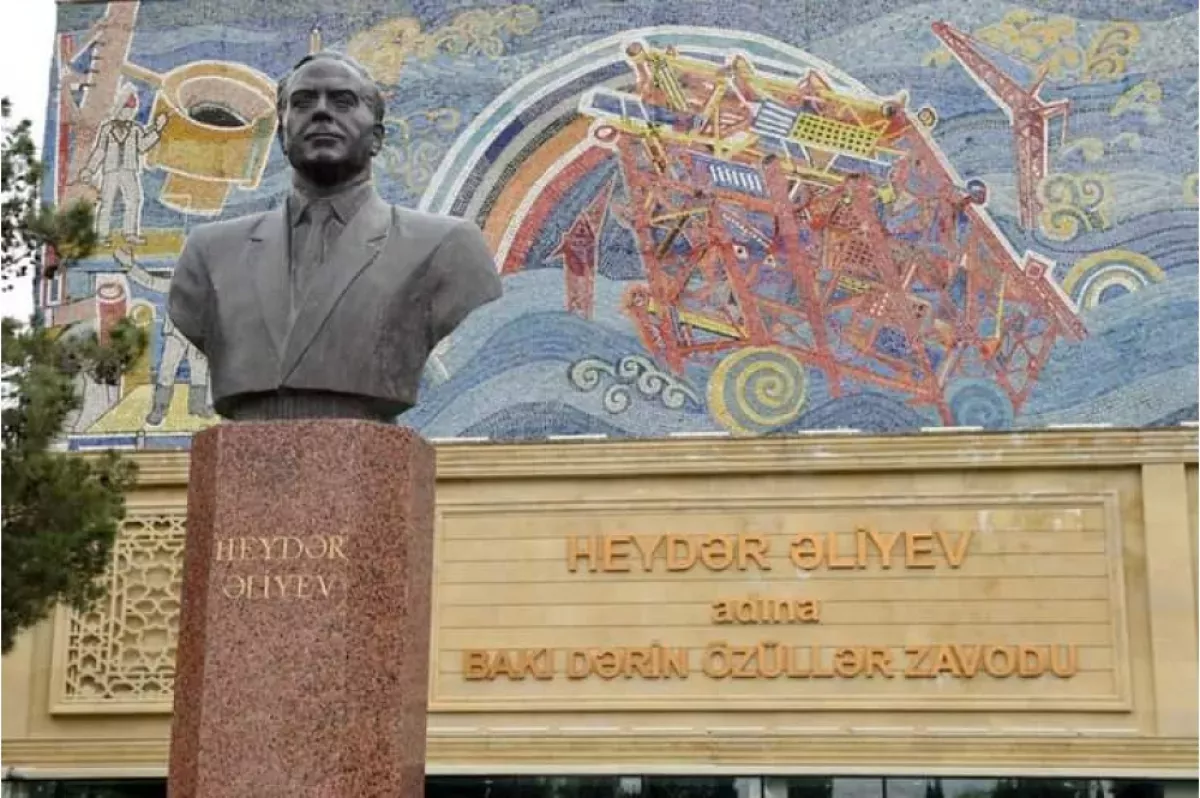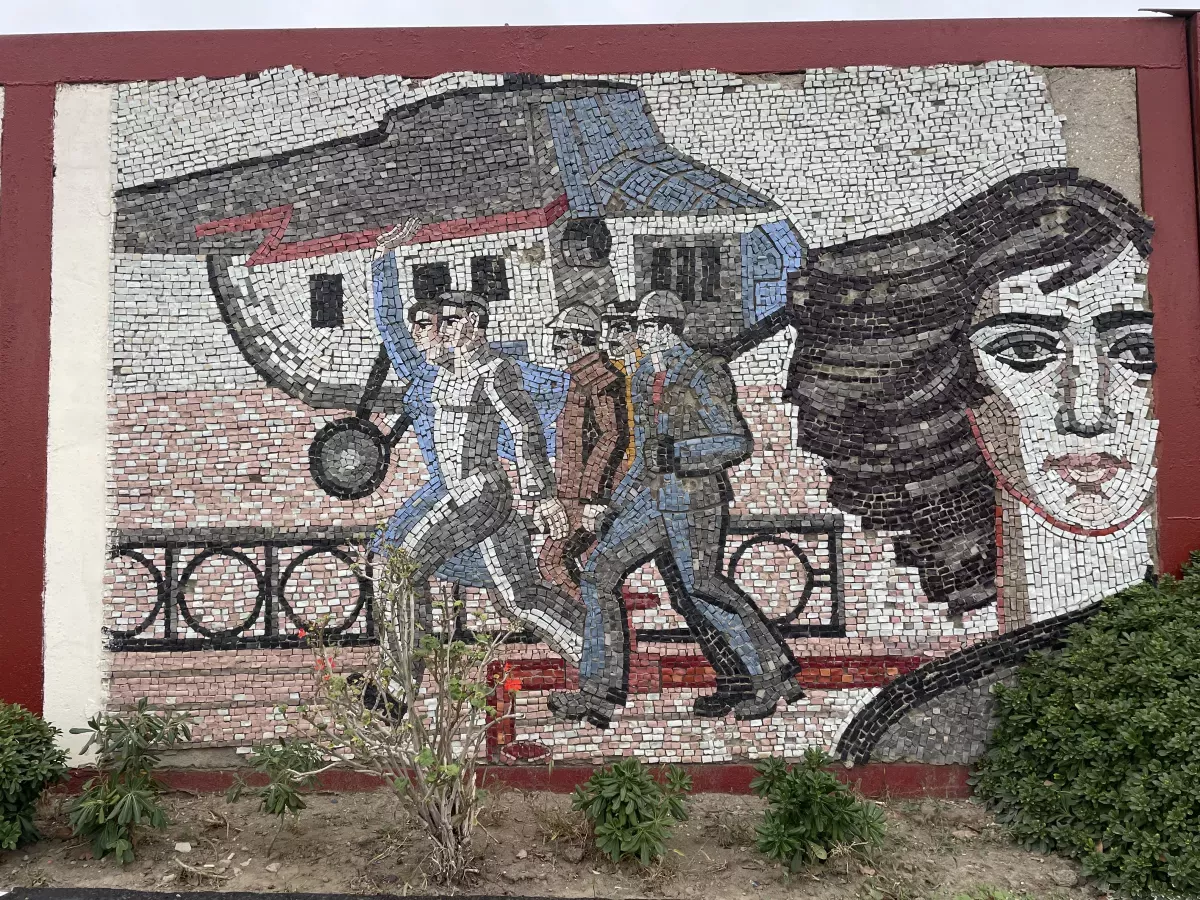Baku’s mosaic legacy: Visual stories of industrial era Historical journey on Caliber.Az
Mosaic is an art form that decorates cities around the world. It is not just a decorative technique, but a part of urban culture, an element integrated into the architectural landscape, capable of giving expressiveness and mood to a variety of spaces.
The word "mosaic" comes from the Latin *musivum*, which means "dedicated to the Muses." It is one of the oldest forms of artistic expression, consisting of creating images or patterns using many small pieces of hard materials fixed onto a surface.
Mosaic technique was known in many great ancient civilizations: from Mesopotamia and Ancient Egypt to Greece, Rome, China, and Byzantium, where it developed in various forms and styles.
Mosaic art saw a significant revival in the 20th century during the Soviet era. In those times, mosaic panels became iconic symbols of the period and an essential part of the state's visual identity. These works were notable for their large scale, rich symbolism, and strong ideological messages, celebrating cultural heritage while reflecting the spirit, hopes, and ideals of the era. Today, these mosaics continue to decorate the facades of schools, cultural centers, metro stations, and factories, giving these places a unique, memorable character.
In Azerbaijan, mosaic art has held a special place in the architectural environment, especially since the 1960s. It became an integral part of the visual identity of cities, giving streets, squares, and building facades a unique character and artistic richness.
Many mosaic panels have gained iconic status and have become landmarks not only in Baku but also in various regions across the country.
Azerbaijani artists managed to express the depth and richness of their national culture through mosaics, blending traditional imagery with modern forms. The themes are diverse—ranging from labour and sports to science, nature, and history.
A special place among them is occupied by the theme of oil, reflecting the country’s main industrial backbone. One can recall an entire array of mosaic works dedicated to this subject.
Heydar Aliyev Baku Deep Water Jacket Factory

The Heydar Aliyev Baku Deepwater Jackets Factory is one of the country’s key enterprises, specialising in the construction of oil industry equipment. In 1984, the decoration of the plant’s facade became a notable event.
It was here that one of the most iconic mosaic works of its time appeared—the panel Rainbow. This piece conveys the scale, power, and complexity of the modern oil industry. The monumental work, created by artists Oktay Shikhaliyev and Hadjibaba Rajabov, presents a vivid and detailed scene of the heroic labour of oil workers.
Heydar Aliyev Baku Oil Refinery

At the entrance to the Heydar Aliyev Oil Refinery, built during the Soviet period, there are two large mosaics created in 1986 by artist Mirza Agha Gafarov. These works are executed with great skill and depict key elements of the plant's operations: oil pipelines, industrial equipment, scenes of labour, and complex chemical processes.
With their dynamic compositions, vibrant color palette, and meticulous detail, these mosaic panels are not only visually striking but also deeply memorable. Seamlessly integrated into the refinery’s landscape, they highlight the vital role of the oil industry in Azerbaijan’s development. Each element tells a story of the sector’s scale and complexity.
Remarkably well preserved to this day, the panels are far more than decorative—they are powerful artistic symbols of Azerbaijan’s industrial strength. They stand as a lasting tribute to the dedication and hard work of the country’s oil workers, forming an essential part of the visual memory of a transformative era and its heroes.
Oil Rocks

The mosaics at Oil Rocks also hold a special place — a unique settlement located east of the Absheron Peninsula, right in the middle of the Caspian Sea. Built on trestles in 1949, Oil Rocks became the world’s first offshore oil platform, recognised by the Guinness Book of Records, and is rightfully considered the eighth wonder of the world.
Despite its remoteness from the mainland, there was still room for monumental art here. The mosaic panels, created by artist Oktay Shikhaliyev, depict scenes from the industrial process: oil extraction and processing technologies, moments of labour, and the achievements of the industry.
National motifs can be traced throughout the works, giving the mosaics a special warmth and cultural depth. Each panel fits harmoniously into the industrial landscape, highlighting not only the power but also the spirit of this unique environment. Even in the open sea, among platforms and pipelines, art found a worthy place.
The mosaics dedicated to the oil industry represent not only an artistic phenomenon but also an important layer of historical memory. They unite the aesthetics of their time with the spirit of the industrial era, preserving images of labour, creation, and progress for future generations.
To be continued…
Vahid Shukurov, exclusively for Caliber.Az








